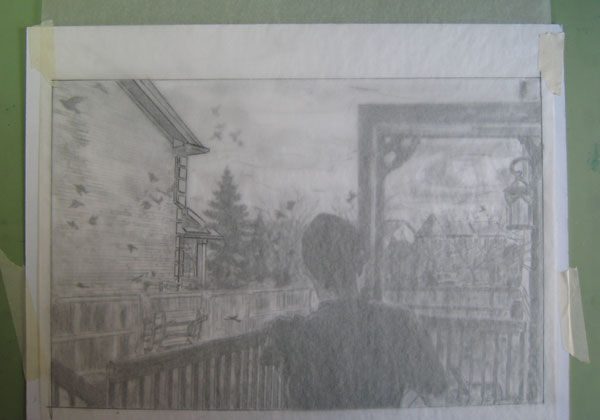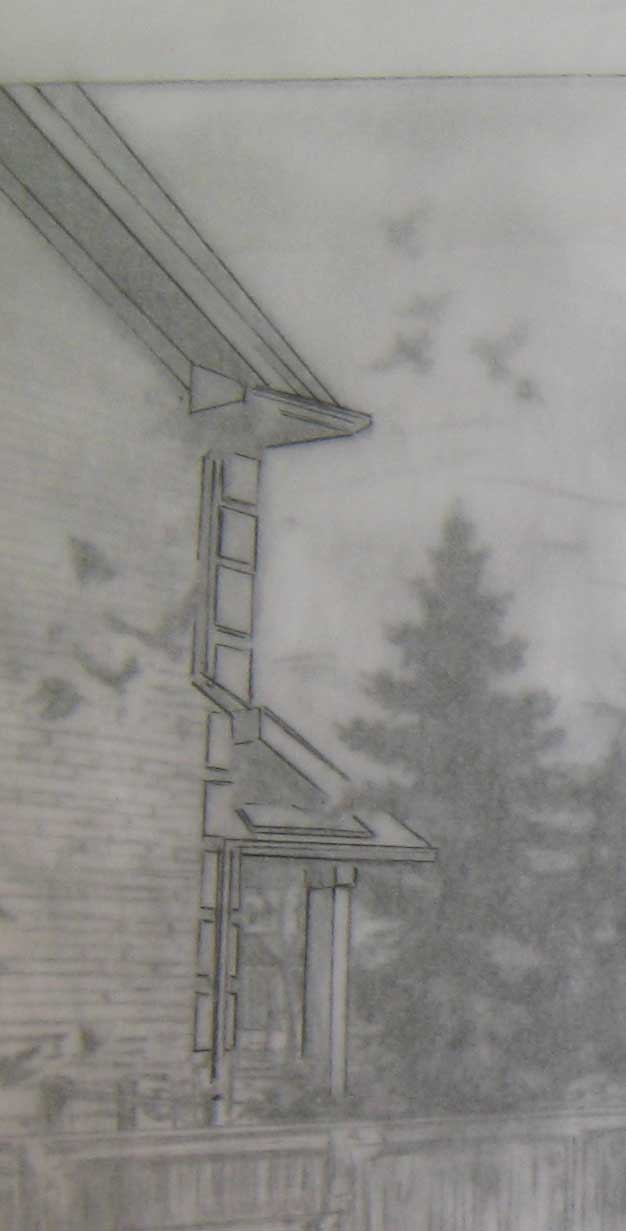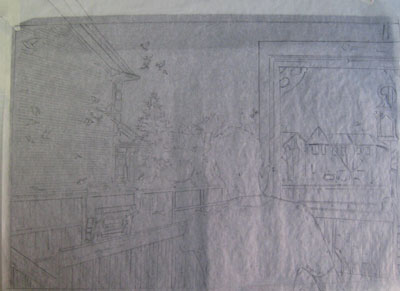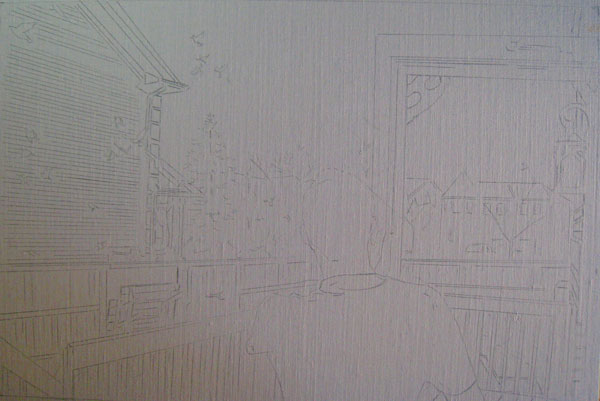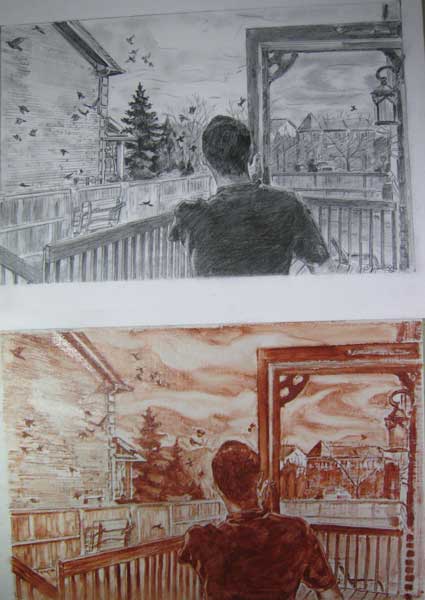Mini Art lesson: Drawing to Underpainting. Christine Montague Oil painting "Wishing.." Begins
Do you ever wonder how one begins a painting? Here are the first steps of my painting in progress now. Anxious to start painting "Wishing it was His Turn to Go" , and not interested to make my own canvas (the image is a not to standard canvas size), I ordered a Fredrix, artist museum quality primed linen board that I could cut to size. Bought online, the statement "hand-primed pure Belgium Linen sounded good to me. But when they arrived approximately a day later, I was surprised to see the warning, in caps, that includes .., EXPOSURE MAY CAUSE HARM...NERVOUS SYSTEM, KIDNEY OR BONE MARROW DAMAGE. Wash ahnds immediately after use. When using so not eat, drink, or smoke. (shouldn't do that when oil painting anyways). Wear an apron (what kind?! a lead one?) .
Oh, my.
Still, onward.
The first step in transferring my drawn image is to tape a sheet of tracing paper over the image. I carefully draw the outline edges first. This serves as my registration reference.
Next I do an outline drawing fof the image. I do not bother with any shading. In this case I draw quite carefully. I like the original drawing and do not want to leave impressions on it by pressing too hard. I include all major detail as there is a fair amount of detail in the original image that I do not want to loose.
I tape the traced drawing onto the linen board & slid a sheet of graphite paper between the two layers. I had not yet cut the board to size and so had extra space on which to tape. I was grateful after I did this. I usually work on gallery mount canvas (canvas with a deeper profile) that I do not frame. That I had not yet cut the board let me add a 1/4" around the image to accommodate for any frame overlap.
Here is the transferred drawing. Somehow , in the using the new board, I have been thrown in my process. For an under painting I usually stain the surface first. If I do it at this step, it will dissolve the graphite drawing. Staining gives me a mid tone to work from. I remove the paint for my lights, and add to it for the darks. Now, as much as the drawing and redrawing in the above processes helps me really know my painting, so I paint with confidence, I don't really want to be that confident, and start the whole process again!
Here is the tonal values of the painting.. Not as well defined as normal due to the lack of staining , but enough so I understand what is going on with the piece when I begin to paint with colour. I did the under painting in Old Holland Classic Oil Colours Burnt Sienna. Note: I found the oil gesso on the linen board very different to gesso on pre purchase canvas. It was shiny and almost acted as a resist. Also, because I had not precut the board or sealed it with a stain, my hands had been in constant contact with the board. Remember the lead warning at the beginning?
